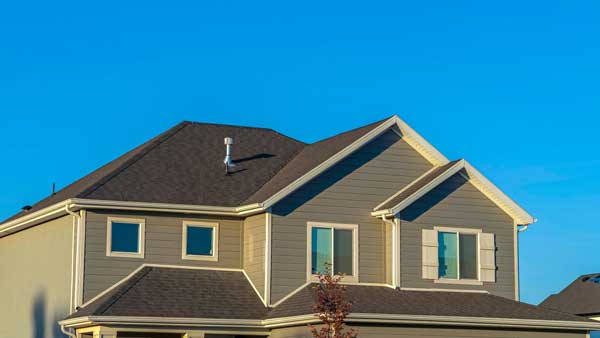Maximizing Roof Health: The Importance of Proper Ventilation
Roof ventilation often flies under the radar when homeowners consider maintaining their houses. Yet, it plays a pivotal role in preserving the integrity of your roof and the overall health of your home. In this comprehensive guide, we delve into the significance of roof ventilation, its mechanisms, benefits, and address frequently asked questions to provide a thorough understanding of its importance.
What is Roof Ventilation?
Roof ventilation is the process of allowing air to flow through the attic space of a building, facilitating the exchange of indoor and outdoor air. It typically involves the installation of intake and exhaust vents strategically placed along the roof’s surface and in the attic.
Ventilation Types:
- Ridge Vents: These are installed along the peak of the roof, allowing hot air to escape from the attic space.
- Soffit Vents: Located under the eaves of the roof, these vents draw in cool air from outside, creating airflow through the attic.
- Gable Vents: Placed in the gable ends of the attic, these vents allow hot air to exit the attic space.
- Box Vents: Also known as static vents, these are installed on the roof and work by natural convection to allow hot air to escape.
- Turbine Vents: These vents utilize wind power to create airflow and expel hot air from the attic.
- Solar-Powered Vents: Similar to turbine vents, these vents are powered by solar energy to enhance ventilation in the attic space.

Free Inspection/Free Quote
Your New Roof/Roof Replacement
$100 Per Month
How Does Roof Ventilation Work?
Roof ventilation functions through a simple principle: the movement of air. During hot weather, the temperature inside an attic can soar, creating a heat trap that affects the entire house. Effective ventilation combats this by allowing hot air to escape through exhaust vents positioned near the roof’s peak, while intake vents draw in cooler air from the outside, creating a constant flow of air.
Benefits of Proper Roof Ventilation:
- Temperature Regulation: By expelling hot air from the attic, roof ventilation helps regulate indoor temperatures, reducing the strain on cooling systems during summer months and preventing heat buildup in winter.
- Moisture Control: Proper ventilation prevents moisture buildup in the attic, reducing the risk of mold, mildew, and rot that can compromise structural integrity and indoor air quality.
- Roof Longevity: Excessive heat and moisture are primary contributors to premature roof aging. Ventilation extends the lifespan of roofing materials by minimizing these damaging factors.
- Energy Efficiency: Improved temperature regulation means less reliance on heating and cooling systems, resulting in lower energy bills and reduced carbon footprint.
- Ice Dam Prevention: In colder climates, inadequate ventilation can lead to ice dams forming along the roof’s edge, causing water backup and potential leaks. Proper ventilation helps mitigate this risk by maintaining consistent temperatures.
FAQs About Roof Ventilation:
-
How do I know if my roof needs better ventilation?
Signs of poor ventilation include excessive heat in the attic, condensation on windows, and musty odors indoors. Additionally, if your energy bills are unusually high, it could indicate that your cooling and heating systems are working overtime due to inadequate ventilation.
-
Can I install roof vents myself?
While some homeowners may attempt DIY installation, it’s recommended to consult with a professional roofer. Proper installation requires expertise to ensure vents are placed correctly and do not compromise the roof’s integrity.
-
How many vents do I need for adequate ventilation?
The number of vents required depends on factors such as roof size, attic space, and climate. A professional roofer can assess your specific needs and recommend the appropriate ventilation system.
-
What are the different types of roof vents?
Common types of roof vents include ridge vents, soffit vents, gable vents, and turbine vents. Each serves a unique purpose, and the best choice for your roof depends on factors such as roof design and climate.
-
Can roof ventilation reduce ice dams?
Yes, proper ventilation helps prevent ice dams by maintaining consistent temperatures along the roof’s surface, reducing the likelihood of snow melting and refreezing at the eaves.
Conclusion:
Investing in proper roof ventilation is essential for maintaining a healthy and durable roof. By regulating temperatures, controlling moisture, and prolonging the lifespan of roofing materials, ventilation not only protects your home but also enhances energy efficiency and reduces maintenance costs in the long run. Whether you’re building a new home or considering upgrades, prioritizing roof ventilation will pay dividends in the form of a comfortable, efficient, and resilient living space.
Materials Used in Roofing:
- Asphalt Shingles: The most common roofing material due to its affordability, durability, and ease of installation.
- Concrete Tiles: Durable and fire-resistant, concrete tiles are a popular choice for roofing in California, especially in regions prone to wildfires.
- Clay Tiles: Known for their longevity and aesthetic appeal, clay tiles are often used in Mediterranean and Spanish-style architecture common in California.
- Metal Roofing: Offers durability, energy efficiency, and resistance to fire, making it suitable for California’s diverse climate.
- Wood Shingles/Shakes: While less common due to fire concerns, treated wood shingles or shakes are still used for their natural aesthetic in certain California regions.
- Synthetic Roofing Materials: Options such as synthetic slate or composite shingles mimic the appearance of traditional materials but offer enhanced durability and weather resistance.
- Cool Roofing Materials: These materials are designed to reflect more sunlight and absorb less heat, helping to keep homes cooler and reduce energy costs, which is especially beneficial in California’s warm climate.
